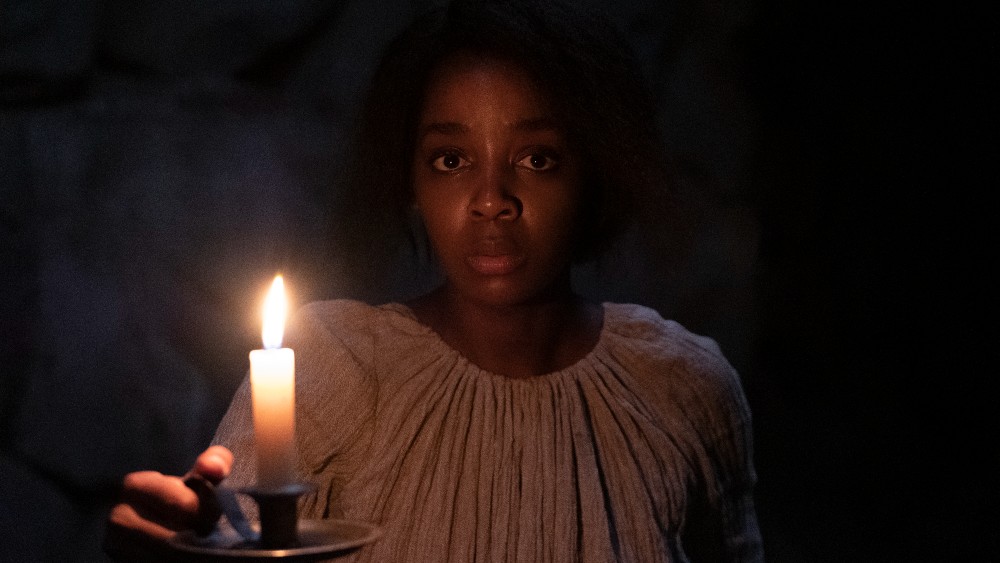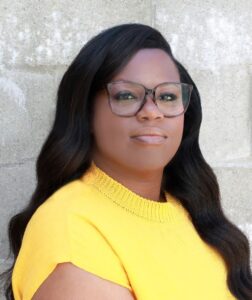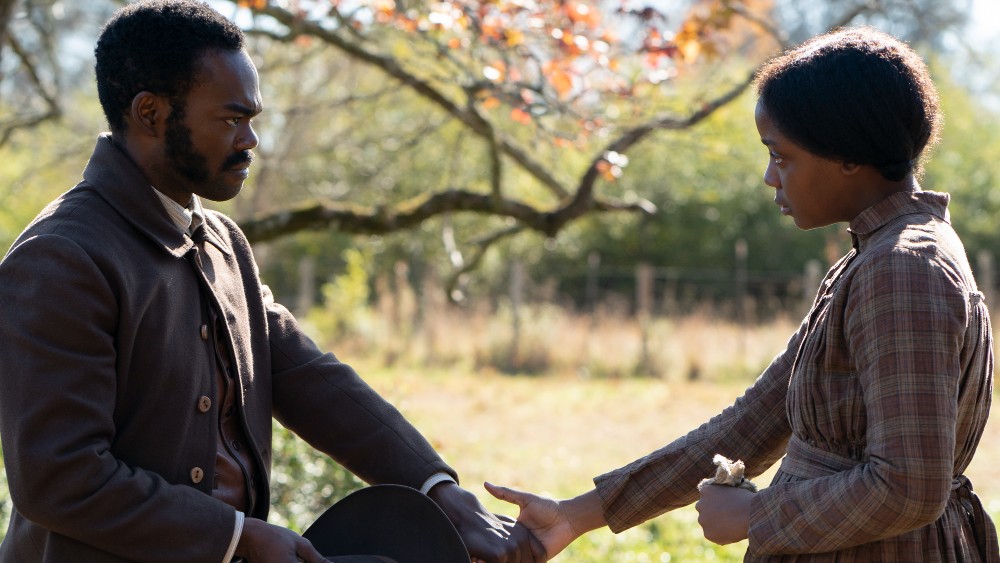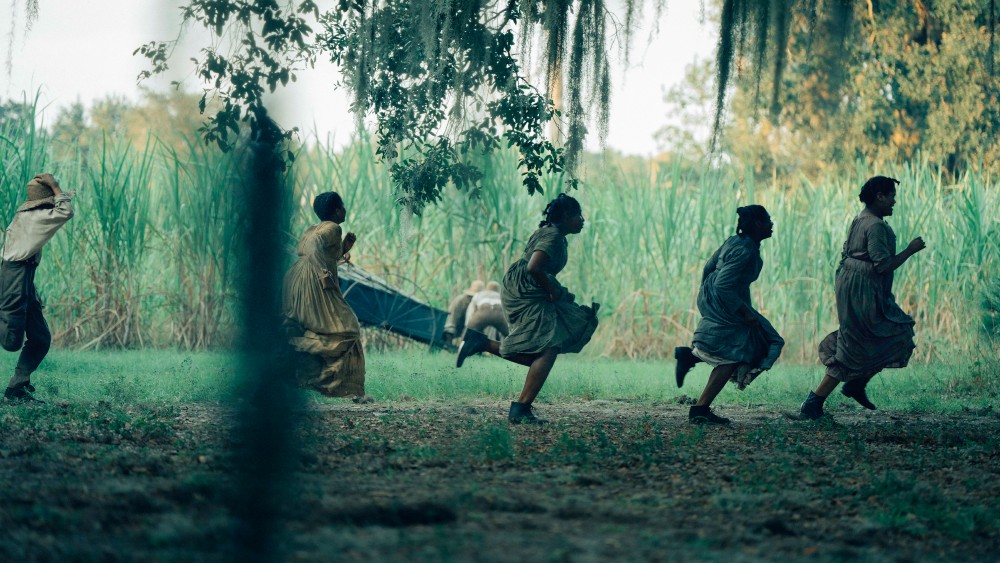
“I feel like there’s just so many elements to the job of being an editor,” says Joi McMillon. “I think the thing that really encompasses what an editor’s job is, is to be a storyteller, and for us to curate the experience for the audience, so not only are they engaged in the story we’re telling, but they’re also invested in the main actor or the star of either the film or the series. It’s a huge undertaking and not easy to do, but I think when you’re collaborating with amazing filmmakers, it makes your job a lot easier.”
McMillon has been an editor for nearly 20 years, cutting her teeth on shorts and on reality shows, The Biggest Loser and The Surreal Life. She’s steadily climbed the ladder within the industry and her craft, working on I Can Do Bad All by Myself, Madea’s Big Happy Family, Sausage Party and more. She’s best known, though, for her association with friend and fellow Florida State University College of Motion Picture Arts graduate, Barry Jenkins. She edited the Director’s acclaimed films Moonlight and If Beale Street Could Talk, sharing an Oscar nomination with Nat Sanders for the Best Picture-winning Moonlight. She has reteamed with Jenkins for the Amazon Prime Video limited series, The Underground Railroad, which has put McMillon, Jenkins and the show in the Emmy conversation.

“I think a lot of people think, especially as an Assistant Editor, ‘Oh, if I can only get into the editing chair, I’ll have arrived and it will be a lot easier,’” McMillon told Below the Line during a recent Zoom conversation. “But they say, ‘Heavy is he who wears the crown.’ It’s a lot of responsibility once you do sit in the chair and you finally get that title as editor. For me, the thing I think a lot of people need to understand about when you do become an editor is the necessity of the team underneath you.
“For me, being a head of a department on a series of [The Underground Railroad’s] magnitude, it wasn’t an easy undertaking, and the thing that made it, to me, easier, was having such a great support team, with Alex O’Flinn being the other Editor; Daniel [Morfesis], our assistant, who also edited an episode, Chapter 7, Israel [Vasquez], our Assistant Editor and Matt Willard, our other Assistant Editor. All of them brought everything to the series and allowed my job to be that much easier and in the final presentation.”
Although McMillon’s earlier statement is a slight twist on Shakespeare’s line, “Uneasy is the head that wears a crown” from Henry IV Part 2. How about, “Heavy is SHE who wears the crown”? McMillon’s Oscar nomination for Moonlight also represented the first time ever that an African-American was so honored. McMillon has broken some serious ground, but speaks modestly of having done so.
“I think a lot of people think you get that opportunity, you get that nomination and the path is so much easier for you,” McMillon noted. “But it isn’t that much easier for you because with one success, people look at you as, ‘Can she do it again?’ and ‘Was it a fluke or is she really talented?’ So I think in each endeavor I am proving myself that not only did I deserve a seat at the table, but I also should get some silverware, a plate and some food as well!”
Did McMillon ever doubt that? Or did she believe she deserved to be at the table?
“I come from a family of six kids, and one of the things our parents instilled in us is not only the dedication to do what you want to do in life, but the work that goes into it,” replied McMillon, who at one point aspired to be a journalist. “I don’t think I ever would have attempted to do or be a part of something if I didn’t think I had the skill to do it. So, for me, I always knew that I had the talent. It was the opportunity that constantly eluded me, and then once Barry tapped me and was like, ‘You’re in the game,’ I was like, ‘All right.’ I’m like that second-string quarterback. ‘Put me in!’”
It’s not just McMillon who’s been on the journey along with Barry Jenkins. She’s part of a package deal of sorts that also includes CInematographer James Laxton and Producers Mark Ceryak and Adele Romanski. “We’ve known each other for so long, and for us to not only be able to have these opportunities, but be able to collaborate together, and then also to experience these wins together, I think it makes it that much sweeter,” McMillon says. “I think we all are so blessed and fortunate to not only be able to work together, but to experience this at the same time.”

Amazon dropped all 10 episodes of The Underground Railroad in mid-May. The series, based on Colson Whitehead’s novel of the same name, follows the young slave Cora Randall (Thuso Mbedu) first as she serves her master on a southern plantation and then as she seeks freedom via a vast, secret underground train system. Along the way, Cora encounters allies and enemies, including an unrelenting slave catcher (Joel Edgerton), and experiences pain, joy, fear, hope, indignity and love in equal measure.
Jenkins directed all 10 episodes, and he lets his shots play out, as the camera doesn’t cut away from beautiful sunsets, the iconic train in motion, or a slave being whipped mercilessly and then burned to death. He also plays with elements of magical realism — like that railroad, which is a full-on operation with trains, conductors, scheduled stops, etc. — and alternate history, such as a creepy town whose white citizens seem to treat people of color as equals; “seem” being the operative word. McMillon considered it her “first and foremost task” to make sure viewers not only focused on Cora, but on her plight.
“Editing ‘Chapter 1: Georgia’ was a huge undertaking for the audience to not only get to know Cora, but to understand her mannerisms and become engaged on this journey that she’s about to embark upon,” McMillon said. “I think, throughout her journey, you get to meet this array of all these other amazing and very interesting characters. Maintaining their storyline, but also keeping her as a focal point in the through-line for the series was one of the things we really focused on. We’re hoping that the audience is immediately interested in where this character is going to take them.”
As one might expect, The Underground Railroad is violent. And, as noted, Jenkins doesn’t flinch from depicting what happens to Cora and those around her. That applies not just to the slaves, but to a baby that meets an awful, bloody fate. If it’s hard for someone at home to watch, imagine how McMillion felt watching it all over and over and over again in her editing bay.
“Yeah, it was [hard],” McMillon says. “The subject matter is not only dramatic, but very heavy. I think one of the things that made us endure these elements of bringing a story like this to the screen was the necessity and the value of the series. One of the things about working with Barry is, he creates such beautiful imagery, but also very effective imagery. A lot of his stories that he tells stays with you long after you’ve turned the TV or you’ve left the theater. And one of the things that we understood working on the series was not only its importance, but bringing these characters not only to life, but allowing people to see that these are human beings. Valuing their journey and their struggle with honor and dignity was one of the things we wanted to do when we were working on the series.

“I’m oftentimes a perfectionist, and so I’m looking at this with kind of a distilled lens, but it was when we would sit back and watch back an episode that it would really hit us,” she continues. “We would have to take moments after experiencing it and understand that it’s something you have to process. You can’t just try to compartmentalize it and not recognize, ‘Yes, we’re telling the stories of our ancestors. Yes, there’s a freedom that we’re still struggling for today,’ but allowing yourself to process this experience and this trauma, I think, leaves you better off and hoping that telling these stories will present hopefully a better future.”
McMillon has heard the Emmy Awards buzz surrounding The Underground Railroad, and she’s thrilled by it, mostly for Jenkins. He’s lived with the project for nearly four years, and she’d like to see him honored. “If it so happens that I’m included, I would of course feel so, so, so thankful to be recognized by my peers yet again,” she says. “I’m just so proud of the series, so I feel like we’ve already won. Even if we don’t get any nominations, how it’s been received and the impact that it’s having on the viewers, to me we’ve succeeded in leaps and bounds.”
Even as she speaks about The Underground Railroad, McMillon is deeply entrenched in her next project, The Untitled Lion King Prequel. Not surprisingly, it reunites her with Jenkins, Ceryak, and Romanski, among others. Like its 2019 predecessor, the prequel will be a CGI-animated adventure.
“Barry keeps things fresh and he keeps it inventive,” McMillon says. “I probably couldn’t have foreseen this in any crystal ball or pipeline. It’s a completely new set of tools, but the thing that’s still very much of the process is telling an authentic and inventive story. It’s cool to bring our type of storytelling to the animation world, and the collaboration so far has been a lot of fun and I’m learning a ton. I’m really excited for the world to see what we’re doing.”
The Underground Railroad is streaming now on Amazon Prime Video.
All pictures courtesy of Amazon Students, credit as noted.





